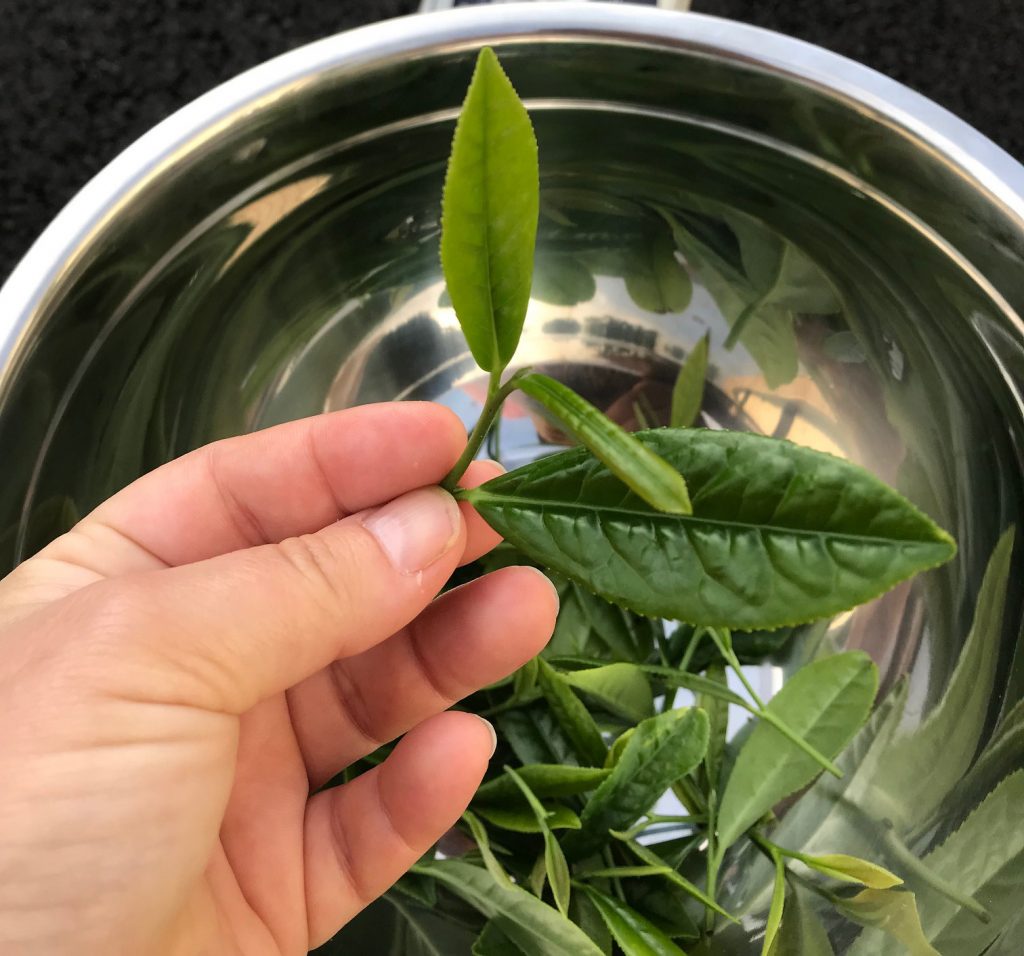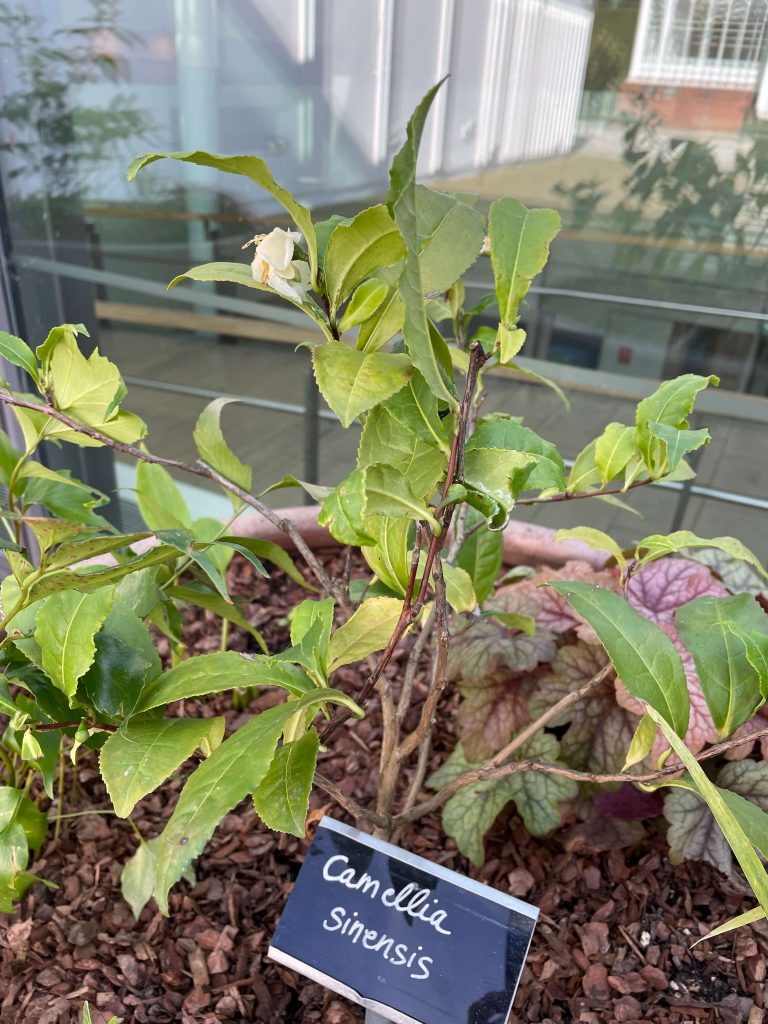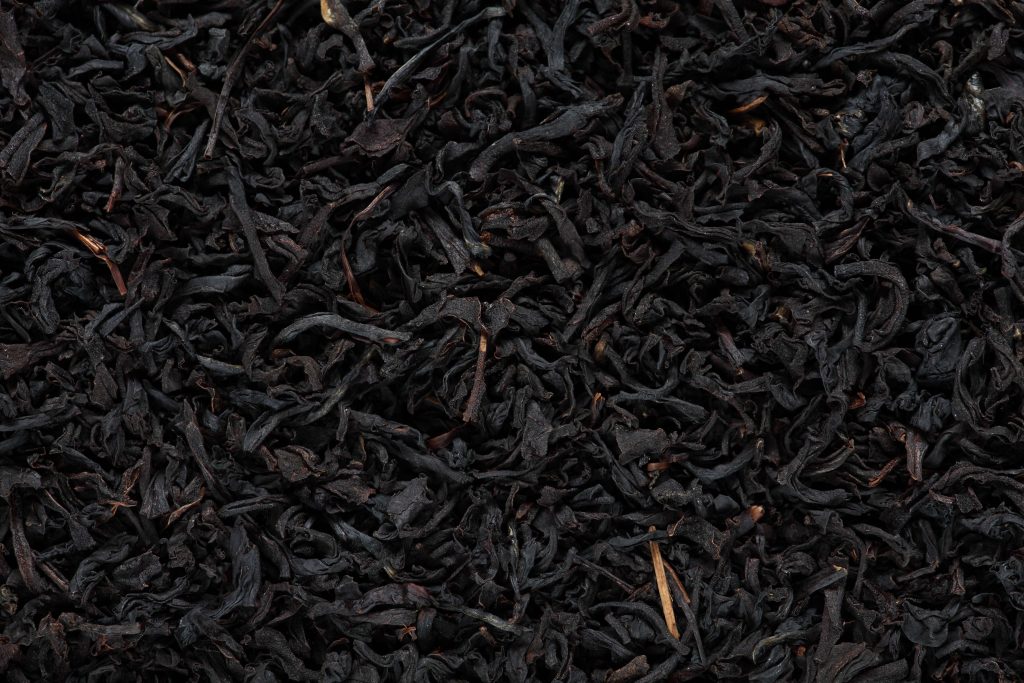What is the tea plant?
The tea plant, or Camellia sinensis, is an evergreen shrub from the Theaceae family. This species has two varieties – sinensis (from China) and assamica (from Assam). Together they are the source of all white, green, yellow, pu’er, oolong and black teas.
How do you make tea from leaves?
The way that Camellia sinensis leaves are treated after they are picked determines the type of tea that you end up with as the end result.
They are oxidised to different levels, with black tea being the most oxidised and green tea the least.
Tea leaves are handpicked when they are young, usually in the spring. With the tip or bud and the first two to three leaves only being picked. The younger leaves are lighter whilst the older leaves are a deeper green.

After being picked the leaves are withered to remove excess water and to start the oxidisation process. Tearing, rolling or bruising the leaves also does this.
For black tea, the leaves are then oxidised before being dried. It is the lack of oxidisation that gives teas like green tea their colour and lightness.
Where do tea plants grow?
The tea plant is indigenous to a stretch of land that, today, covers South West China, Northern Burma/Myanmar and North East India.
It has been cultivated successfully in tropical and subtropical regions across the world – today tea is grown in over 60 countries including the UK.
Tea plants that are grown at higher altitudes grow more slowly and acquire more flavour.
What does a tree plant look like?
The tea plant has bright green shiny leaves that have a serrated edge and that are hairy on the underside. We often think of a tea plant as a bush, but wild tea trees can grow to 15 metres tall. They are often pruned to waist height.
Its flowers are small and white, and they typically are in bloom in the autumn. They appear in groups of two to four with seven to eight petals. The tea plant also produces brownish-green fruits.

How long does the tea plant live?
The leaves shouldn’t be harvested for the first three years of the tea plant’s life. After that a tea plant can live for up to 50 years, some living for hundreds of years. Some are even claimed to be thousands of years old.
Does all tea come from the tea plant?
The tea plant is used to make lots of different types of tea such as black tea, white tea and green tea. The reason they look, smell and taste different is because they are processed differently.
However, there are some differences in the tea plant which leads to different teas. The Camellia sinensis. var. assamica is used to make Assam black tea.
The type of tea is determined by where the tea plant grows, and how long the tea leaves oxidise for.

Did you know? Fresh leaves from the tea plant contain 4% caffeine
Can you grow tea at home?
Tea is native to South Asia and does best in a tropical or subtropical climate. However, it can be grown at home, either from seed or bought and planted into your garden.
It should be planted in October or November and does best in acidic soil with a pH of 6 to 6.5. If you don’t have acid soil you can also grow a Camellia in a pot with peat-free ericaceous compost.
Camellia sinensis does not like direct sunlight, so be sure to keep it in shade or dappled sunlight. It’s a hardy plant, but frost and snow can damage flower buds and flowers.
They love water but don’t like sitting in it, so make sure your tea plant is in a pot with good drainage.
Did you know? Tea tree oil does not come from the tea plant – this comes from the leaves of the tea tree, Melaleuca alternifolia.
Plant hunting and Robert Fortune
In 1848 Scottish botanist and plant hunter Robert Fortune smuggled tea plants and experienced Chinese tea growers into India for the East India Company. His theft of Camellia sinensis was instrumental in the British Empire gaining control over the tea trade, as well as establishing tea estates in South Asia and East Africa.


